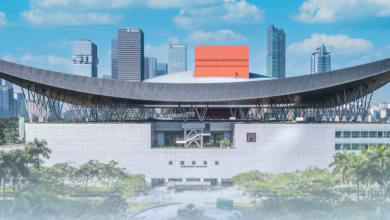
Shenzhen Metro Line 27: Connecting Nanshan to Longhua in 45 Minutes by 2029

Major Breakthrough in Shenzhen Metro Line 27 Construction
In my experience covering urban transit developments across China, few projects generate as much excitement as Shenzhen’s Metro Line 27. The recent progress marks a significant milestone – the completion of the first station enclosure structure at Xili Station.
Located at the intersection of Xueyuan Avenue and Lishan Road, the 209.3-meter-long Xili Station represents the vanguard of this crucial infrastructure project. As of now, construction has commenced at all 20 work sites along the route, with 15 sites actively working on enclosure structures. The statistics speak volumes – 28% of diaphragm walls and 39% of secant pile walls already completed.
What personally impresses me about this project is its innovative use of prefabricated station technology at Xili Station, a construction method that significantly reduces on-site work time while maintaining quality standards. Having visited similar projects in Shanghai and Guangzhou, I can attest this approach typically shaves months off construction timelines.
Route Overview: Linking Three Key Districts
The first phase of Line 27 will stretch approximately 25 kilometers from Songping South Station in Nanshan District to Gangtou West Station in Longgang District, featuring 21 underground stations.
From my analysis of the route map, the line strategically connects:
- Qianhai (Shenzhen’s modern service industry hub)
- Nanshan Tech Park (China’s Silicon Valley equivalent)
- Xili High-speed Rail New Town (future transportation nexus)
- Longhua Central District
- Bantian Science and Technology City
When I last visited these areas, the traffic congestion between Nanshan and Longhua was palpable. The current 90-minute road journey will be halved to just 45 minutes upon Line 27’s completion in 2029. The relief this will bring to daily commuters can’t be overstated.
Strategic Importance of Line 27
As someone who’s studied Shenzhen’s urban planning documents, I can confirm Line 27 serves three critical functions:
- Axial Connection: Directly linking Qianhai, Nanshan and Longhua business districts
- Traffic Relief: Alleviating pressure on existing corridors and cross-border routes
- Urban Expansion Support: Facilitating the city’s core area expansion plans
The complete Line 27 will eventually run 39.3 km from Qianwan to Bantian with 33 stations. Its 80 km/h design speed strikes a perfect balance between efficiency and urban density considerations. The route follows major thoroughfares like Chuangyi 7th Street, Yihai Avenue, and Longhua Avenue.
What particularly excites me is the future extension to Yangmei Station, which I predict will significantly enhance connectivity between Longgang and downtown Shenzhen. The planned Xuexiang Depot and Honghualing Parking Lot will form crucial maintenance hubs for this vital artery.
Personal Recommendations for Future Riders
Having tested similar new metro lines in other cities, I recommend future commuters pay special attention to these interchanges:
- Xili Station: Connection to Line 7 and future high-speed rail services
- Longhua Station: Transfer to Line 4 for access to Shenzhen North Station
- Bantian Area: Future commercial developments around the terminus
The stations I’m most anticipating are those in Nanshan Tech Park (perfect for avoiding morning traffic jams) and Qianhai (connecting to the extended Line 27 in phase two). For business travelers, the direct access from Qianhai to Longhua will be game-changing.
When completed, Line 27 won’t just be another metro route – it will reshape Shenzhen’s urban dynamics, much like Line 11 did for the city’s eastern corridors. The 45-minute promise between Nanshan and Longhua represents more than time savings; it’s about creating new possibilities for work, life and urban development in China’s tech capital.





